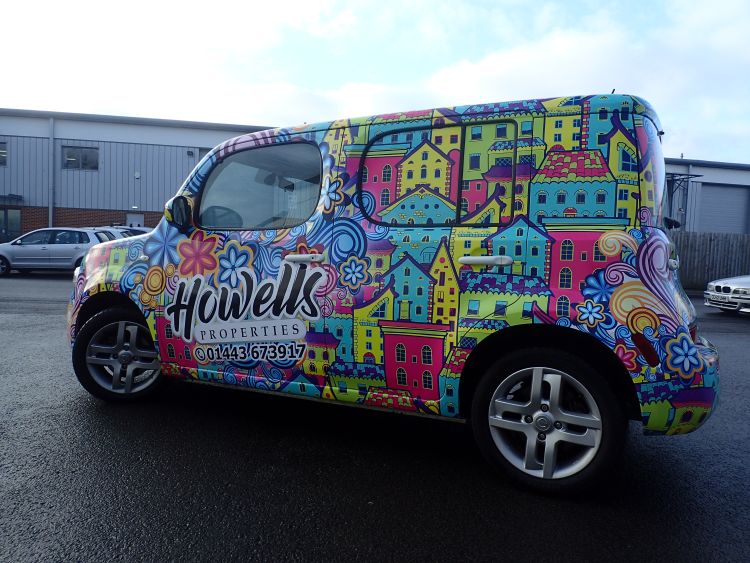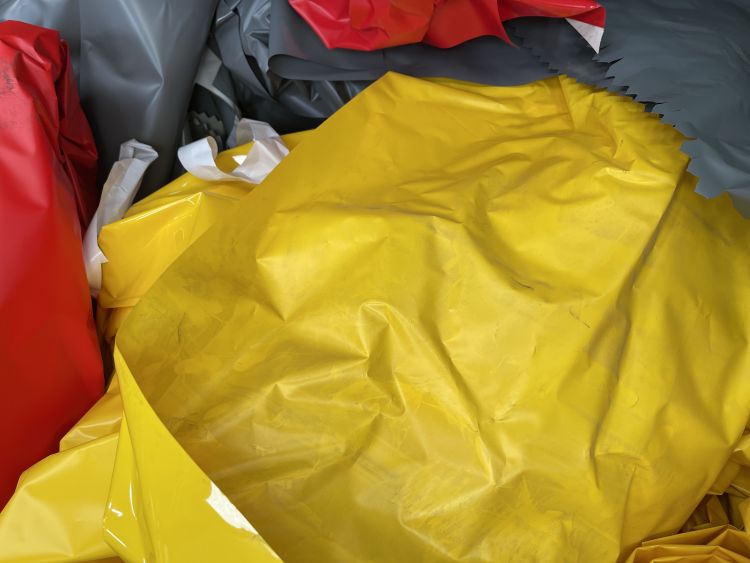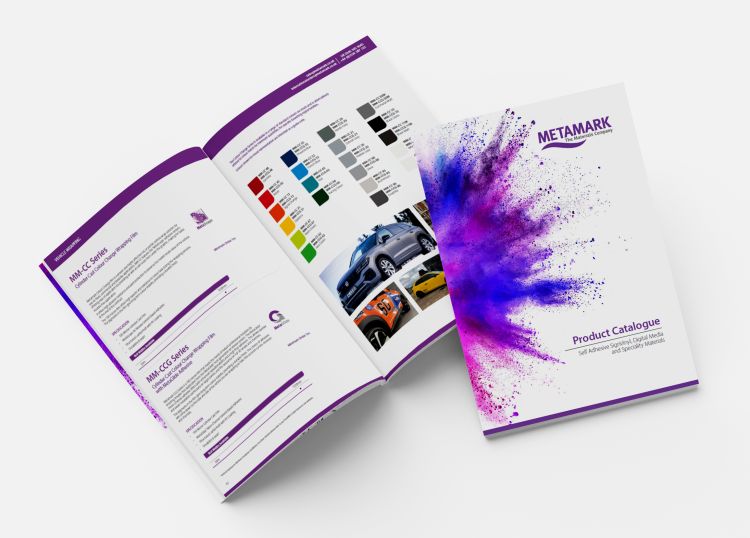Origins of vehicle wrapping



No definitive history, in terms that could be solidly verified, records who among the signs and graphics industry’s practitioners produced the first wrap. Where and when it happened is then a similarly vague concept. What can be said with absolute certainty though is that, whoever first coerced what would have been an uncooperative piece of material over a complex, curved surface, really started something.
Today, wrapping is a market with its own skills, language and dynamics. Sometimes referred to as ‘a sign-maker’s Everest,’ wrapping isn’t something that can be learned wholly from immersion in a book or by binging on YouTube content. The skill is more usually acquired from someone who has already summited, and typically learned by those who have the hands for it. Make no mistake, it’s a skill and not everyone can claim it.
Materials manufacturers saw the potential latent in wrapping very soon after its Genesis. Great effort and mind-boggling expense was then directed into development efforts to make vinyl films, and the emerging digital media, compliant with the wrapping process. It required not just materials that were more ‘stretchy’ or elongation-tolerant, it demanded much of the adhesive systems used and improved liner species too. The rewards were hanging tantalisingly in the mid-distance. If wrapping could displace much of what might be called traditional applied graphics on vehicles, each vehicle could consume five or six times more film. That was good for business.
Today, most vinyl manufacturers offer films expressly designed for wrapping applications. Among them, headquartered in the UK together with its manufacturing HQ is Metamark. Metamark is firmly in the vanguard and can claim that it makes, and has on its shelves, every material a modern signs and graphics producer needs to undertake profitably, any job that comes their way. Wraps come thick and fast and so Metamark’s portfolio includes materials for the purpose.
Metamark is its own man where development is concerned and it has launched a number of products over the years that have wrapping in their sights. Among them was MetaWrap MD-X which, according to Ian Simister, the company’s sales director, “helps make wrapping more profitable for the signmaker, and more attractive for their customer.” He adds. “MD-X, like anything with ‘MD’ in its nomenclature that Metamark manufactures, can claim to be at the very top of its game in terms of print quality. All MD-Class films deliver quite exceptional results with all the modern ink species.”
More recently, Metamark introduced MetaCast MDC. “This film is the very essence of ‘premium’ though very competitively priced. It’s what many signs and graphics producers reach for, or are required to use by their customers, when the application demands the qualities of a premium cast formulation and exceptional print quality,” says Ian.
Naturally, MDC, and all Metamark materials for wrapping applications, have so-called mechanically-matched laminates available for them. In being identically formulated, the laminates don’t materially alter the feel and characteristic ‘handle’ that’s baked into the films they protect during manufacture. That important when you see the world through the eyes of those who have to work hands-on with a specified material.
“Metamark’s materials MD-Class print qualities have another trick to offer the signs and graphics producer routinely producing vehicle wraps. It’s this. The MD-Class print qualities the materials all claim mean that, in the hands of capable printers, results achieve a uniform quality across Metamark material types. In practical terms that translates to the ability to use, for example, Metamark MD5 on relatively simple or flat surfaces, and MD-X or MDC on the really curvy stuff. That saves money,” he adds.
Wrapping is an application with a very broad base of appeal and some surprisingly novel value. Wraps strongly promote what’s printed upon them on the one hand, and on the other, they promote wrapping itself. Countless sign-makers recount experiences of new customers asking for “a wrap like such-and-such.” With an alleged six thousand pairs of eyes and hour alighting upon liveried vehicles when they’re on the road, that’s quite an advertising campaign for wrapping.
Wrapping is popular to the extent the term seems to be creeping up on other applications too. ‘Window Wraps’ are fast becoming a ‘thing’ for example and no doubt other areas of the man-made landscape will soon be ‘wrapped’ rather than ‘lettered’ or, (RIP) ‘graphic’d.’
Wraps today are specified in the main for their promotional potential and by those seeking the ultimate stand-out impact for example on a custom car. All sorts of niches and specialisations have erupted around the core application according to Metamark’s Max Somper who heads material development and commercialisation for the company. “Signs and graphics producers are endlessly creative and inventive,” he says. “Much of what’s becoming or has become fashionable around the core of wrapping is down to signmakers pushing the envelope. We’re all ears when that happens, it’s how we ensure that the materials we develop and sell reflect a market need.”
Changing Colours!
One such material species that’s grown around an application is the Colour-Change film. In Metamark’s terms that’s not a film that itself changes colour and changing fashion that puts it out of business almost as fast, but rather a coloured film that can change the base colour of a whole vehicle. There is huge and proven potential for a film that makes that job easy, and affordable, and that’s just what Metamark claims to offer.
MM-CC films from Metamark are wrapping films that enjoy the benefits of the same DNA that gave the world MD-X, but in a coloured-in-the-mass variant. Using these films, wrappers can take a white van in, and send a blue one out into the wild shortly after. At the end of the van’s life or lease, the film comes off to reveal a pristine white vehicle once more. It works wonders for eye-appeal on the road, and fleet managers love what it does for residuals and cost-of-operation.
Protecting the underlaying finish represents a whole area of enquiry that Metamark has explored and the effort culminated in the release of a range of specialist Metamark paint protection films. These films shrug off the otherwise damaging effects of the perpetual bombardment of abrasive and high-impact road debris that vehicles have to sail through. They don’t handle like vinyl, because they’re not vinyl. Despite that, there’s a business in the making for skilled wrappers who’d like to move into the growing market for paint protection, building on skills they’ve already developed. Many Metamark customers are already alert to the fact that some of the films on offer can be uses to offer extreme protection to vulnerable areas of wraps.
Sustainable view
With a huge market like wrapping at the industry’s disposal, and the continual consumption exerted upon it by customer demand, it was only a matter of time before the question was asked “what happens to all that film when it’s taken out of use?” Finding an answer to the question is something that’s exercised the whole industry, and Metamark has developed, and very recently launched, what it feels is the answer.
Iain Wallace, who’s responsible for the programme and its ongoing commercialisation explains, “You’re likely to hear a lot about something called MetaStream now and into the future. It’s MetaMark’s vision personified for dealing with production and recovery waste that results from making signs and graphics and, in particular, vehicle liveries. What’s got everyone excited is that MetaStream doesn’t rely on some otherworldly and unproven material species to do the good job we’ll go on to describe, it works with the long proven Metamark materials the industry works with.”
MetaStream takes as its input production waste, like liner and vinyl weed, or printed and laminated graphics recovered from vehicle fleets. Its outputs are luxury paper goods made from liner elements, and useful plastic articles like road-furniture all of which can themselves be recycled time and again. Metamark itself uses MetaStream to deal with its own production waste from making the materials. It’s a key driver in Metamark’s Z2L (Zero To Landfill) initiative.
The programme is currently available to volume converters wrapping large fleets and this has resulted in leading logistics concerns among others specifying Metamark materials for their fleets. Metamark is trialling the programme with smaller concerns now with the goal of making the programme very widely available. Metamark was keen to point out that the programme only works with qualified materials from its product range but makes the point that it’s already keeping what’s suddenly become a valuable resource out of landfill and incineration waste streams.
The next announcement due on the MetaStream front is a fully qualified Material System for wrapping trains that’s both fully recyclable and that shrugs off graffiti. The material has already been seen in public and was used by Milton Keynes based Charles Rayner to wrap a Hydrogen Powered train that played a starring role at the COP26 Conference in Glasgow.
Ian Simister concludes, “Wrapping, as an art, has come a very long way and with innovation led by market influences Metamark is convinced it has a very long, sustainable, and bright future ahead of it yet. Those considering whether they should enter the market will have already noted that it’s something market is asking for and the appetite is growing. There’s a lot of support out there and Metamark isn’t shy in offering it.”
